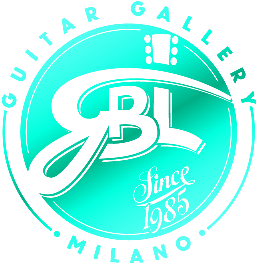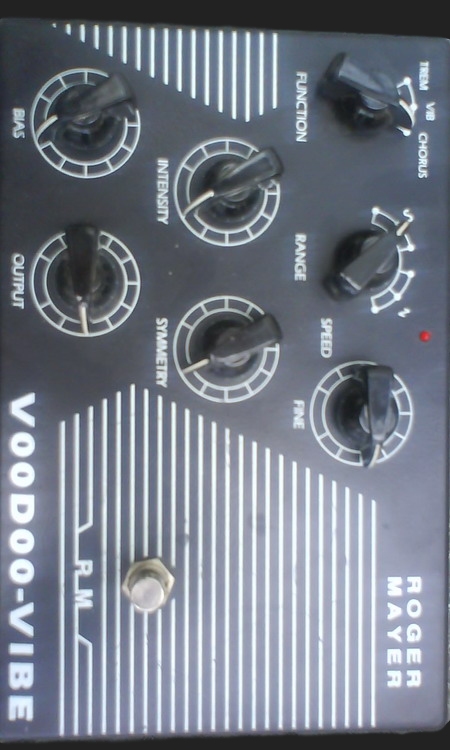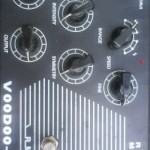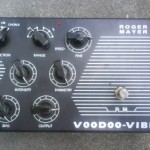HISTORY:
The Voodoo-Vibe is the latest evolution of the Univibe as used by Jimi Hendrix and Robin Trower. The Voodoo-Vibe will faithfully reproduce all the old retro sounds and incorporates the modifications I personally developed for Jimi. The Supervibe was my next evolution of the Univibe and many leading performers including Stevie Ray Vaughan and Robin Trower used this unit. The Voodoo-Vibe followed the Supervibe and is accepted as the industry leader and used by many top performers. The Voodoo-Vibe + also has a Tremolo circuit plus the usual Chorus and Vibrato functions and the control of the sound parameters has been greatly expanded. The addition of Pulse Square waveforms to the normal Classic waveforms is a valuable and useful addition to the sweep capabilities. The Speed of the sweep generator has also been expanded together with the Symmetry Range and these features greatly increase the options of producing many new and unheard effects and the Voodoo-Vibe+ is a modern and worthy successor to our very successful Voodoo-Vibe. The art of analogue processing has moved forward.
TECHNICAL:
The Voodoo-Vibe is completely analogue in operation and exhibits a very transparent and full sound quality that is lacking in digital products that simulate chorus and flanging effects The digital zipper noise and graininess is eliminated and the guitar tone is maintained throughout the full dynamic range. Class A discrete circuitry is used in all audio stages and results in ultra high audio quality and very low noise. The signal to noise ratio of the unit is 102dB, which is about 12dB better than a CD. Extensive internal power supply filtering is used so that the low noise performance is maintained when using even the most basic commercial mains adapter or battery eliminator.
FRONT PANEL CONTROLS:
FUNCTION:
The unit can be set to operate in Chorus, Vibrato or Tremolo modes by the front panel switch.
SPEED RANGE:
The Voodoo-Vibe+ enables a selection of three speed ranges of either Classic or Pulse waveform. These two different types of sweep waveform when used in conjunction with the Symmetry control will allow completely different types of sweep effects to be produced. The maximum speed has been greatly increased to provide a blurred effect with sub-harmonic undertones being produced as the frequency reaches maximum. The maximum speed capacity should be investigated in any of the three operational modes together with the various intensity and symmetery parameters.
SPEED:
This control allows the fine setting of the speed range as selected by the Speed Range switch.
SYMMETRY:
This controls the linearity of the Classic and ON/OFF ratio of the Pulse waves, which are used to sweep the filter sections or modulate the tremolo section. When the ratio of the rise and fall time of the Classic wave is varied from the usual symmetrical 50% to other values it has the audible effect of altering the way the filter sweeps as the symmetry is adjusted away from the norm. It is now possible to have a fast rise and a slow decay or the reverse by manipulation of this control. The ON/OFF ration of the pulse wave can be varied in a similar manner to provide variable switching waveforms for the modulation filters or tremolo section. The intensity ,bias and symmetery controls work together providing a wide range of effects.
Wild pulse tremolo sounds are easily created as well as outrageous modulation effects.
BIAS:
This control enables the unit to be tuned to produce different sweep effects in the chorus and vibrato modes and will change the centre sweep frequency. In the tremolo mode the bias sets the depth of effect as well as the offset. This control is one of the most important sweep parameters to get right and it pays to only make small changes and carefully evaluate them.
INTENSITY:
The level of depth of effect can be set by this control and is used in conjunction with the other controls to set up the effect required.
OUTPUT:
This controls sets the Output Level required.
INPUT JACK:
The unit is powered on by inserting a lead into this socket when using the internal 9V battery. Keep the plug out of this socket when not in use.
HW OUT:
This is a hard wire or true bypass output. The dual buffered outputs are disconnected when this output is selected.
BUFFERED OUT:
These are identical dual low impedance Class A buffered outputs and are provided to act as a splitter both in the bypass and effect modes thus enabling long cable lengths to be driven with no high frequency loss or to facilitate parallel path signal processing.
TO/ FROM:
These two jack sockets are for connection to an external foot volume pedal (not supplied) for the external control of speed. Please consult website/manuals to download wiring diagrams to allow the use of commercial volume pedals.
DC POWER JACK:
An external AC adapter (not supplied) can be used and access is through a standard DC power jack situated next to the jack sockets. It uses the standard negative centre pin connection protocol used by many leading manufacturers. Internal onboard filtering ensures that optimum low noise performance is maintained and diode protection provides peace of mind in case of polarity setting mistakes.
INTERNAL BATTERY:
Access to the internal battery is made by loosing the 4 screws on the bottom to allow the cover to open and it is recommended to use a premium alkaline type battery for the longest life.
LED INDICATOR:
The LED indicator shows the status of the unit.
POWER REQUIREMENTS:
9V alkaline battery or AC adapter 9V rating 50mA. A regulated type adapter is recommended.
INPUT IMPEDANCE: 1M ohms.
OUTPUT LOAD IMPEDANCE: 10K ohms or more.
SIGNAL TO NOISE RATIO: 102dB.
DIMENSIONS: 220 (W) x 75(H) x 150(D) mm.
WEIGHT:1580g



